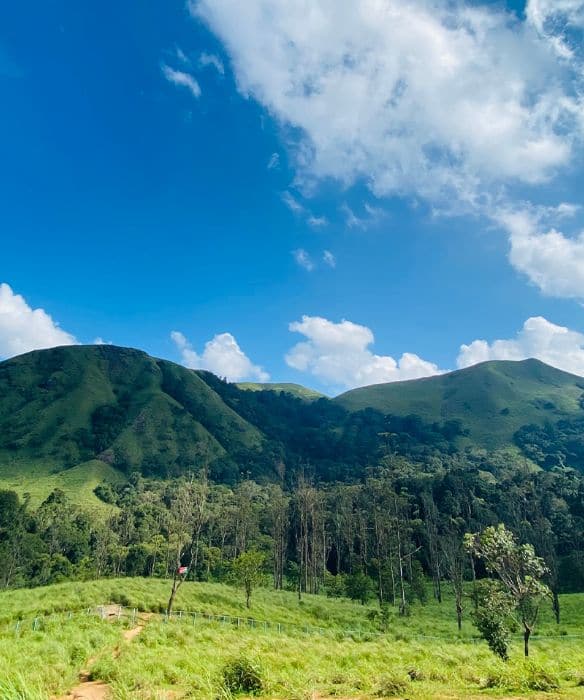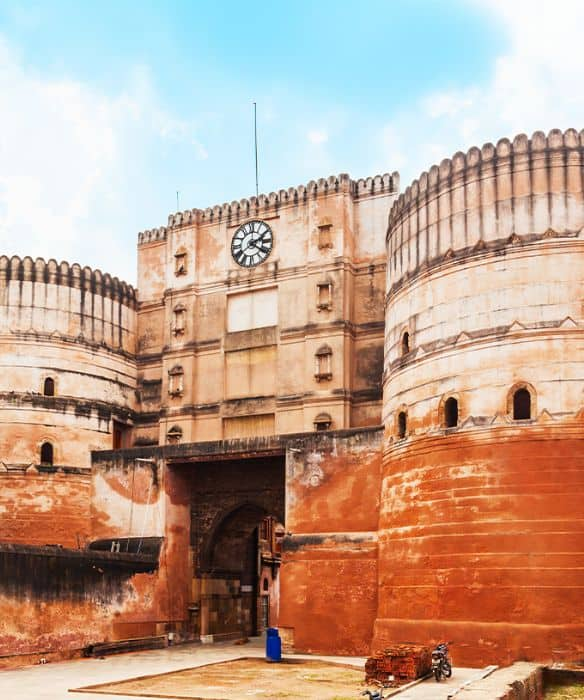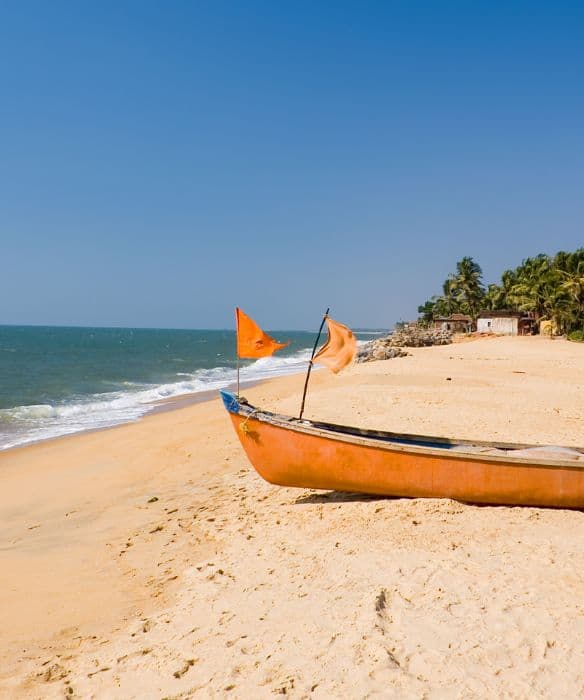Stay logged in to proceed with bookings, orders and offers.
On changing the terminal, you will loose items in your cart. Are you sure you want to change your terminal?
Kashmir through Temples: Visiting Buddhist and Hindu Ruins
It is called Kainshehr', the local told us.
We were looking for a way to the ruins of the medieval city of Parihaspora. But our description of the historical site and our gesticulation didn't ring a bell with the residents right away. After a series of questions and exclamation marks, the locals figured we must be looking for Kainshehr.
Kainshehr can be called the city of stones. As such is the present condition of the old city, no other name could describe it better. Upon reaching the site, we found that the city was a mound of abandoned stones. Architectural debris lay on the ground, narrating a tale of loss and decadency. But Kainshehr wasn't always like this. Long ago, it stood for something proud and majestic. A time when the rulers of the city named it Parihaspora _ the city of laughter.
I visited Kashmir for the first time in 2018. One of the many places I covered was the 140-year-old Shri Pratap Singh Museum in Srinagar. The trip proved to be enlightening. I learned of Hindu and Buddhist kingdoms that dotted the lands of Kashmir. However, the trip was short, and I could not make a circuit of all the sites. So I strengthened my resolve to explore these historical locations on my next visit.
Two years later, I was in Kashmir again. I spent the first few days enjoying its natural beauty. But I was keen on discovering and documenting the past I had seen and read about so much. So, I charted out a map of the historical sites in the valley and made plans to visit them.
Inspired by my excitement, my friends tagged along, and we took the road from Srinagar to Baramulla, visiting the historical sites that fell on the way. Parihaspora was one of them.
At the beginning of the 8th century CE, Lailaditya Muktapida ruled Kashmir. He was a Hindu ruler of the Karkota dynasty. Lailaditya shifted the capital to a plateau overlooking the Jhelum river and named his new capital Parihaspora. The new capital was supposedly designed to bring happiness and joy to the subjects of the realm and thus called the city of laughter.
Lailaditya built a palace and many temples in Parihaspora. A temple dedicated to Lord Vishnu here had a giant golden statue, and an idol of Buddha adorned another temple. These were enormous structures that depicted the diverse religious atmosphere of the times. Kalhan, the great historian of Kashmir, was inspired by the art and architecture of Parihaspora and wrote about it in detail in his epic Rajtarangini.
However, the glory of Parihaspora didn't last long. After Lailaditya's death, subsequent kings shifted their capital. They also changed the course of the Jhelum river through human intervention. The river, which once flowed closer to Parihaspora, was diverted, and as a consequence, the economic prosperity of the city dwindled. In the decades and centuries that followed, the rulers of Kashmir plundered the riches of Parihaspora. The golden and bronze idols were melted to forge artefacts of a different period.
Centuries later, the ruins of Parihaspora lie in the shadow of the city of modern Srinagar. Locals don't remember it as an erstwhile seat of power. Instead, it has been left as an unguarded space, open for an evening cricket session for the children. Adults come here to catch a glimpse of the setting sun beyond the almond orchards. You can also see the now barren old course of the Jhelum River.
The ruins of the city of Parihaspora are about 20 km from Srinagar. You can rent a cab and direct the ride to SSM College Pattan, a landmark to reach the ruins.
On another day in the valley, I took public transport to Anantnag. I was on a quest to find the Sun Temple of Martand. I relied heavily on the accuracy of Google Maps, which consequently led me to a wrong place.
Then followed another verbal adventure with the locals and me excitedly trying to communicate my geographical needs. The villagers, once again, weren't aware of its Hindi name and directed me to a place they called Mattan.
I reached Mattan after changing some more buses. It began to rain as I stood in front of the unguarded Sun Temple of Martand. I couldn't take refuge in the ancient sun temple on account of the missing roof.
Looking around, I could see the remains of the intricate carvings on the walls. The sharp chiselled shapes had withered away with time. I was sad and felt as old as the decrepit building around me.
Lailaditya Muktapida built the Sun temple at Martand on a plateau next to the present city of Anantnag in the 8th century. Five centuries later, Sikandar, the second ruler of the Shah Miri dynasty of Kashmir, destroyed the temple as a mark of Islamic domination over the region.
The temple further disintegrated with multiple earthquakes that shook the valley.
The Hindi movie Haider featured the Martand Sun Temple in one of its songs, Bismil. It is regretful that despite being a crucial point in history, the governments are yet to develop the temple to make it a part of the tourist circuit.
I had a hard time reaching the temple as many locals, I had stopped mid-way to ask for directions, weren't aware of the temple. It didn't help that the official names of most locations were ancient and stylised and not known to commoners. However, all were eager to help me find my destination.
With the help of Anantnag residents, I reached Kehribal, a settlement adjacent to the temple. The radio tower at Kehribal was close to the Martand Sun Temple, and provided a panoramic view of the place.
The sun temple is about 10 km from Anantnag. Be warned that Google might show you a different location. To avoid confusion and save time, look for Kehribal on the map next to Ranbirpora.
On the way back to Srinagar from Anantnag, I came across desolate temples in Awantipora that hid tales of forgotten chapters in history.
The Hindu King Avantivarman established the Utpala dynasty after the fall of the Karkota dynasty in Kashmir. He named his capital Awantipora and built a temple dedicated to Lord Vishnu called Avantiswamin. He dedicated another temple to Lord Shiva and named it Awantiswara.
'It is called Woontapore', the local told us.
Awantipora is opposite Pulwama city on the Jammu-Srinagar National Highway. It is 30 km from Srinagar and 26 km from Anantnag.
We are yet to unearth a treasure trove of the historical and archaeological wealth of Kashmir. We must cherish the value of this cultural heritage. This will help restore and rebuild the ancient glory of Kashmir, the land of Sharada, the Hindu Goddess Saraswati.





The Adani One expressly disclaims all liability, direct and indirect, in respect to actions taken or not taken based on any or all the contents of this Blog. The Blog is an opinion of the contributor based on the collation of data from various sources and is provided only for information purpose. Adani One does not canvass, advertise, solicit, invite or induct for any product, merchandise, information, brand or any other materials mentioned in the Blog, nor does it obtain any monetary benefit from the same. Reader is advised to read and apply his/her intellect and discretion in this regard. Any Intellectual Property mentioned in this blog belongs to the rightful owner. We do not intent to claim any interest over the same.